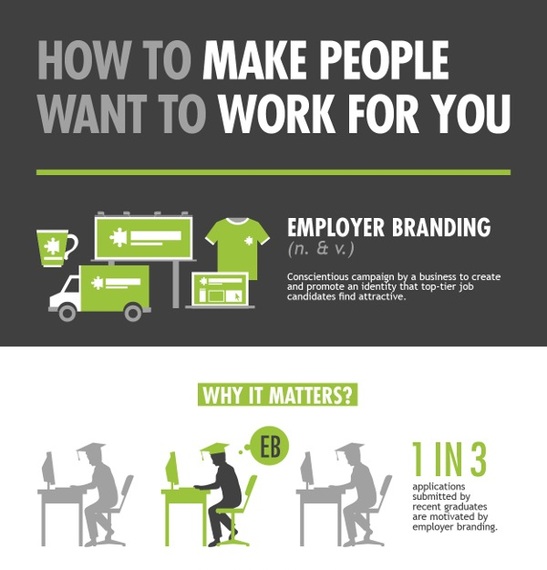We all know that competition for jobs is tough, but at the top it's even tougher -- for employers. Around a third of employers worldwide planned to increase graduate recruitment in 2011. In order to get the best candidates, companies need to position themselves as the best to work with. Google has been cited as Fortune magazine's number 1 employer for 5 years running and receives 1 million applications a year. By investing in 'Employer Branding,' a company can instil confidence in candidates. They need to prove that they have the best work environment, the best reputation, the best benefits package and the best opportunities for career development. In America, three in five employees would rather spend a night in jail than lose their benefits package.
Importantly, there are surprising advantages for companies who do invest in Employer Branding. Companies need to retain good workers, and increasing job satisfaction through Employer Branding can encourage loyalty and decrease staff turnover rates (by up to 28 percent). All of this, and more, is illustrated in a new infographic, packed with statistics about what potential employees are looking for in a company, how the company can convey this and what not to do when it comes to making people want to work for you.
Source: Talent Puzzle
